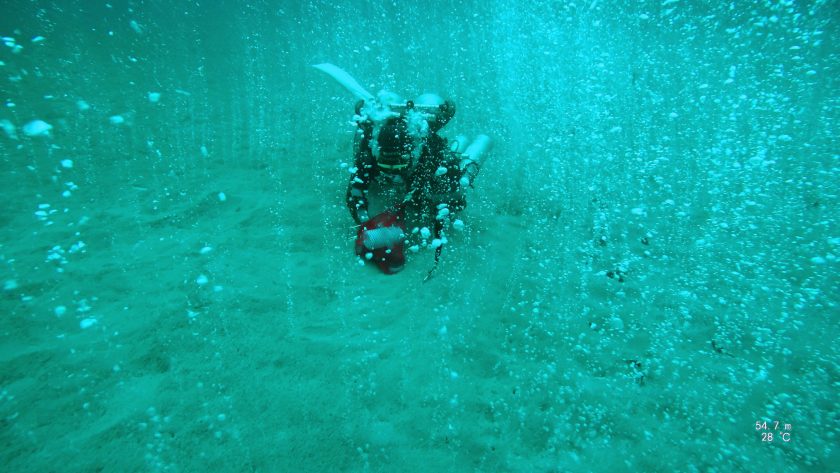Deep Diving Science
November 12, 2020

Diving 200 feet under the ocean surface to conduct scientific research can lead to some interesting places. For Jackson School of Geosciences Professor Bayani Cardenas, it placed him in the middle of a champagne-like environment of bubbling carbon dioxide, with off-the-chart readings of the greenhouse gas.
Cardenas discovered the region — which he calls “Soda Springs” — while studying how groundwater from an island in the Philippines could affect the ocean environment of the Verde Island Passage. The passage is one of the most diverse marine ecosystems in the world and is home to thriving coral reefs.
The amazing bubbling location, which Cardenas captured on video, is not a climate change nightmare. It is linked to a nearby volcano that vents out the gases through cracks in the ocean floor and has probably been doing so for decades or even millennia. However, Cardenas said that the high CO2 levels could make Soda Springs an ideal spot for studying how coral reefs may cope with climate change.
“These high CO2 environments that are actually close to thriving reefs, how does it work?” said Cardenas. “Life is still thriving there, but perhaps not the kind that we are used to. They need to be studied.”
Cardenas and co-authors from institutions in the Philippines, the Netherlands and UT described Soda Springs along with multiple scientific findings about groundwater in a paper published Jan. 16, 2020, in the journal Geophysical Research Letters.
The scientists measured CO2 concentrations as high as 95,000 parts per million (ppm), more than 200 times the concentration of CO2 found in the atmosphere. The readings range from 60,000 to 95,000 and are potentially the highest ever recorded in nature. The CO2 levels fall quickly away from the seeps as the gas is diluted in the ocean, but the gas still creates an elevated CO2 environment along the rest of the coastline of the Calumpan Peninsula, with levels in the 400 to 600 ppm range.
Cardenas is a hydrologist and not an expert on reef systems. He discovered Soda Springs while researching whether groundwater from the nearby land could be discharging into the submarine ocean environment, which is a phenomenon that is generally ignored by scientists looking at the water cycle, Cardenas said.
The team tracked groundwater by testing for radon 222, a naturally occurring radioactive isotope that is found in local groundwater but not in open ocean water. Along with the CO2 bubbles, the team found hotspots in the seafloor where groundwater was being discharged into the ocean. This is significant, said Cardenas, because the connection between the groundwater and ocean means that there is a pathway for pollutants from the island to reach the reef system.
This is particularly important for a place such as the Philippines, he said, where coastal development is booming largely because of ecotourism driven by the nearby reefs, but the communities almost always depend on septic tanks instead of modern sewage systems.
Back to the Newsletter